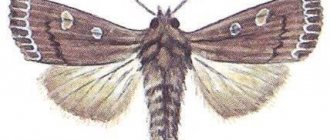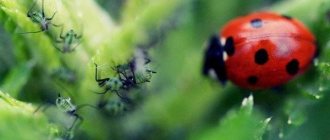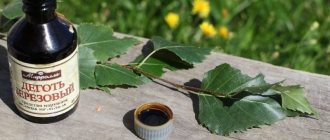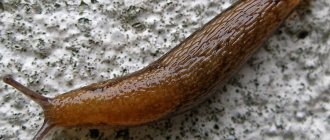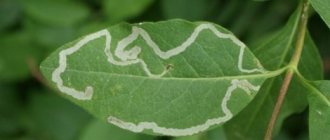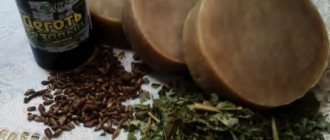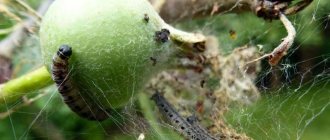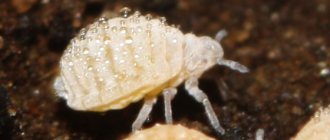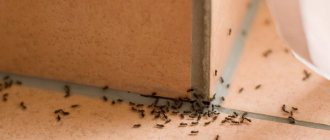The question of how to treat cabbage, roses, apple trees and other plants against caterpillars worries most gardeners. After all, these pests are not averse to eating not only green leaves. Caterpillars can even be found on pine and other conifers.
Almost all people love butterflies, but in our latitudes no one likes caterpillars. Meanwhile, there is a place in the world where caterpillars have earned honor and respect, and not at all for their culinary merits.
Many years ago, one Brazilian decided to move to Australia and took his favorite cactus with him - the prickly pear. The plant took root and began to reproduce, so actively that it soon took over vast areas and threatened agriculture and livestock farming. Felling, fire and chemicals could not cope with the invader. But the little butterfly succeeded. It was its caterpillars, brought from Argentina, that destroyed huge areas of prickly pear, restoring biological balance. And grateful Australians not only introduced strict quarantine on the import of plants, but also erected a monument to the little caterpillar.
But such stories, unfortunately, are very few. Most often, caterpillars damage the garden and vegetable garden, depriving us of our treasured harvest.
Varieties and harmfulness of caterpillars
The process of appearance of worm-like larvae is simple - butterflies lay eggs on the back of leaves or on plant stems, from which caterpillars emerge. The larvae remain in this form from several days to several years and constantly harm the plant.
Depending on what the caterpillars feed on, they are divided into four groups:
- Polyphages - absorbing everything in their path and causing the greatest harm to plantings.
- Monophagous - feeding only on a specific plant.
- Oligophages - eating crops and fruits of one family.
- Xylophagous - destroying bark and wood.
Each group has its most dangerous representatives. Not all caterpillars pose a threat to agricultural crops, however, among them there are such serious parasites that can easily destroy the yield of some vegetables and fruits. The most harmful caterpillars on a summer cottage include the larvae of cabbage moths, cutworms, gypsy moths, lacewings, and leaf rollers. They differ in the type of food, size and color.
Black
Black caterpillars found in the garden can be harmless peacock moth larvae and dangerous larvae of the armyworm and gypsy moth. The offspring of the peacock's eye are frightening in appearance, but practically do not harm most country plants. Black larvae with long spines live mainly on weeds - nettles and thistles. They are less common on raspberry bushes.
In spring and early summer, large colonies of caterpillars can be seen hanging from plants in clusters. A large number of peacock eye larvae can cause damage to raspberry plantings, however, timely processing of berry bushes will help preserve the harvest.
More significant damage to plants is caused by the larvae of the warlike moth, a gray-brown moth-like moth. Black 4-centimeter polyphages can significantly reduce the yield of fruit trees and shrubs. This caterpillar is often found on sunflowers.
The voracious offspring of the gypsy moth can be recognized by their dark color with orange dots. These larvae grow up to 7 cm and eat flowers and leaves of apple trees. If caterpillars are found, they must be exterminated without delay, otherwise you may lose your apples.
Gray
Gray caterpillars with a greasy sheen, growing up to 5 cm, are the larvae of the moth. They appear in two stages, develop quickly over 5-10 days and are so insatiable that in just a few days they can completely deprive the plant of green leaves. The first stage caterpillars hatch from June to July and destroy seedlings of sugar beets, corn and sunflowers. The larvae of the second stage appear from August to September and parasitize mainly on vegetables - potatoes, beets, etc.
In one night, about 5 cutworm caterpillars can destroy a dozen plants.
Greens
Mostly green caterpillars are common in the country. From them appear cabbage whites, raspberry moths, cabbage cutworms, leaf rollers, and onion moths. The ones to be most wary of are female white moths, which lay several hundred eggs per season on cruciferous vegetables. Butterfly caterpillars are very aggressive and voracious; they quickly eat up plants, not allowing a head of cabbage to form, and then move to neighboring plantings.
Cabbage is attacked not only by white moth larvae, but also by cabbage cutworm. Cutworm caterpillars are difficult to detect - they feed mainly at night and hide during the day. Their presence can be judged by the holes on the leaves of vegetables. Another species of butterfly that is dangerous to plants is the leaf roller. Two-centimeter polyphagous larvae damage all fruit trees and berry bushes. They can be found on honeysuckle, currants, raspberries, apple trees and pears. If you find a small green worm on a tree, you must immediately treat the plant with a special product.
Onion moth caterpillars develop and parasitize garlic and onions. These tiny insects devour the leaves of bulbous plants, gnaw through the stalks, shoot tissue and penetrate the bulb, which leads to the inevitable death of the plant. Caterpillars that parasitize raspberries and currants, wild shrubs and trees turn into bright green raspberries. Fortunately for gardeners, these beautiful butterflies are quite rare in nature, so they are practically never found in summer cottages.
White
Pale, tiny whiteflies are a source of headaches for gardeners. A small insect systematically destroys a plant at all stages of its development. Larvae and adults of the butterfly feed on vegetable seedlings and leaves of fruit bushes, in particular red and black currants.
Whitish worms can be seen on tomatoes, cucumbers, and peppers. During the growing season of plants, several generations of whiteflies appear, causing significant damage to the crop.
Yellow
Yellow larvae hatch from the eggs of the corrosive woodworm. Caterpillars feed mainly on wood, infect the trunk of plants with bacteria, and gnaw tunnels in the trunk and stem. As a result of the parasitic activity of caterpillars, plant branches become fragile and brittle.
Apple glass caterpillar
In addition to woodworms, xylophages include the offspring of the glass butterfly, which causes serious damage to garden trees. The larvae hatching from eggs laid in the bark gnaw passages in the trunk of the plant, which also disrupts the circulation of sap. Despite their name, glassworm caterpillars also parasitize plums and pears. If you spray the plants in a timely manner immediately after flowering, you can get rid of glass larvae for a long time.
Codling moth caterpillar
There is an opinion among summer residents that for every fruit there is its own codling moth. Apple, plum, pear and barberry trees fall under the attack of butterflies. The larvae of apple and plum moths are the most insidious, as they are oligophages. The danger of codling moth caterpillars is that they damage fruits and young leaves of shoots, causing the entire shoot to die. The worms penetrate the fruits, chew them out from the inside, and then move on to another untouched fruit.
Multi-colored bright caterpillars
Colored hawthorn and lacewing caterpillars pose a serious threat to agricultural crops. The shaggy gray-orange hawthorn caterpillar prefers to parasitize pink-flowered plants - apple trees, rose hips, almonds, and cherries. In a short time, it gnaws out buds, buds and leaves.
Large four-centimeter lacewing caterpillars, attracting attention with their red color with bright orange speckles, are dangerous not only for plants, but also for living beings. The hairs covering the caterpillar's body can cause an allergy attack or cause a burn to the skin.
Cabbage pests.
All summer they tended the cabbage, and when they cut the heads of cabbage, there was no joy: small cabbages grew, and even those that were affected by some pests. Therefore there is a lot of waste. What to do? Shouldn't we give up growing cabbage next year?
Cabbage, compared to other vegetable plants, is the least protected from pests. It feeds on aphids, cruciferous flea beetles, bugs, leaf beetles, rapeseed flower beetle, larvae of cabbage flies and moths, cabbage and turnip whites, cabbage moths, rapeseed sawflies and cabbage stalk worms. Therefore, growing it really requires a lot of attention.
And it must be done starting in the fall, when the soil is being prepared: digging the area where the cabbage will grow must be deep. It is necessary to promptly destroy weeds not only in cabbage crops and plantings, but also around the entire plot, since aphid eggs overwinter on cruciferous weeds and caterpillars hide in the summer. For the purpose of prevention, you should also plant marigolds and marigolds among the cabbage, the smell of which repels many harmful insects.
To combat a large number of cabbage pests, you need to lure and try to lure natural enemies to your plot: the Trichogramma ovita, ground beetles, ladybugs, tahini flies and er flies: Nestia, which willingly settle near flowering plants of the Umbelliferae family. Like the Greek gods, these insects feed on nectar. Most of all, ladybugs, lacewings and other beneficial insects are attracted to the flowers of tansy, caraway, fennel, flowering caps of perennial onions, umbrellas of carrots, and dill. So you need to “settle” these plants in your garden, setting aside a corner for the flower-nectar conveyor. In dry spring and summer, cabbage is attacked by aphids.
Use of chemicals
Insecticide-based chemicals are the most effective in combating voracious butterfly larvae. You can poison caterpillars in your garden using the following drugs:
- Spark and Karate;
- Aktara and Taran;
- Inta-Vir and Fufanon;
- Rovikurt and Karbofos;
- Lightning and Fas.
When used correctly, caterpillar poison can destroy a large number of pests. However, with constant use, the poison becomes addictive to parasites. Therefore, it is not advisable to use the same remedy for caterpillars all the time.
The use of chemicals can cause intoxication of the human body after consuming processed fruits, so it is necessary to strictly adhere to the manufacturer’s recommendations. The fight against caterpillars on flowers through the use of pesticides is carried out only in cases of the most advanced stage of infection.
Mechanical impact
Mechanical impact is the simplest available and safest control method, which includes not only dropping pests from trees and collecting them manually, but also removing overwintered nests and oviposition. Collecting caterpillars by hand must be done with protective gloves, as many larvae have bristles that protect them from enemies.
On a note!
You can also influence butterfly larvae through hunting belts, which are placed on a tree trunk to protect its crown. No less effective are traps in the form of jars, which are filled with aromatic bait liquids.
However, such manipulations will have a positive effect in case of minor infestation of trees or other plantings by caterpillars. If there are already too many insects, fighting caterpillars in the garden will not give the desired results. This method is not suitable for tall trees either.
Folk remedies for caterpillars
Folk remedies are not always as effective and efficient as store-bought insecticides. But they are also capable of inflicting significant damage on a multi-legged enemy.
Infusion of tobacco leaves
400 g of dry, powdered leaves are infused for two days in 10 liters of water. Before spraying the plants, the infusion is filtered and diluted with water 1:2, and 40 g of laundry soap is added to better fix the composition on the leaves.
Chamomile infusion
1 kg of leaves and inflorescences is poured into 10 liters of hot water and left for 12 hours. Before spraying, dilute with water 1:3 and add 40 g of soap for every 10 liters of infusion.
Infusion of common yarrow
Stems, leaves and flowers of yarrow (800 g) are poured with boiling water and infused for 30 minutes. Then dilute 10 liters of water and leave to infuse for another 4 days. Before use, add 40 g of soap.
Onion peel infusion
Experienced gardeners believe that this remedy is especially effective in combating caterpillars on cabbage. A three-liter jar is filled one third with onion peels, to which 2 liters of water are then added and left to infuse for 1.5-2 days. The infusion is filtered and diluted with water to 4 liters. For better adhesion of the infusion, add 25 g of laundry soap to the leaves.
Decoction of green tomatoes
The tomato tops are placed in the shade and dried, and then a bucket is filled with it, filled with water and boiled for an hour. The broth is filtered, diluted with water in a ratio of 1:5 and 45 g of soap are added.
Hunting belts
Hunting belts are sold in specialized stores. But making them with your own hands is not easy, but very simple. To do this you will need cardboard, paper, rags, plastic film, burlap or rubber. Hunting belts are safe for humans and can stop insects on their way to the treasured green crown of fruit trees.
Celandine
Celandine is simply dried and ground into powder. Then the necessary parts of the plants are powdered with this powder and scattered on the ground nearby.
Sagebrush
One kilogram of wormwood is poured with water so that it covers the entire part of it and this mass is boiled for 15 minutes. Next, the product is mixed in 10 liters of water and sprayed from a spray bottle. This poison is effective against leaf-eating insects.
Table soda
Dilute 2 tablespoons of soda in 10 liters of water and treat the desired plantings with the resulting solution. If it is expected to rain, you can simply sprinkle the cabbage with soda, because the rainwater will dissolve it.
Soap and birch tar
Birch resin is good at repelling caterpillars. In order to prepare a product based on it, you need to mix 4 tablespoons of tar with a third of a piece of grated soap. Next, the mass is mixed in a bucket of water and applied to the trees.
Methods for controlling green aphids
Insects on roses suck the juice from the young shoots and leaves of the plant, causing it to become deformed and dry out.
They also do not disdain buds. - a fairly large type of pest, especially in comparison with others. These insects have a shiny green color (in some cases brown) and long black antennae.
In the spring, larvae emerge from overwintered eggs, which eventually turn into wingless females. The next generations are distinguished by already winged individuals, capable of flying to neighboring bushes and forming new colonies there.
Did you know?
Over the course of a year, more than ten generations of green aphids can develop.
The number of this type of rose pest in open ground usually increases in June, after which they carry out their “dirty work” until the end of summer. In most cases, aphids settle on the ends of young shoots and in buds, but there are not too many of them on the leaves. Damaged buds can no longer open, and the shoots of the plant become bent.
It is necessary to begin treating bushes against these pests with the appearance of the first larvae, repeating the course of treatment as necessary: after 2-3 weeks until the aphids completely disappear.
For these purposes, such products as “Confidor”, “Iskra-M”, “Iskra Double Effect”, “Zubr” and “Tanrek” are often used. The advantage of these products is their high level of effectiveness (even in hot weather), systemic mechanism of action and rapid penetration into plant tissue. The drugs are not washed off by rain.
You can also remove green roseate aphids mechanically by shortening damaged shoots or wiping off pests with a damp cloth. Small colonies of aphids are eliminated using a soap solution
(a grated bar of ordinary soap is diluted in 10 liters of boiling water). As soon as the solution has cooled completely, it is immediately applied to the damaged bush.
Features of treating plants against caterpillars
When exterminating pests, it is important to follow certain rules:
- Adhere to processing deadlines.
- Do not get carried away with chemicals - you should use toxic compounds as a last resort, without exceeding the dosage.
- It is necessary to poison insects in dry, windless weather in the morning or evening hours.
- Wear protective equipment when using chemicals.
- Follow the rules of hygiene - after treatment you need to wash and change clothes.
- Destroy any remaining funds rather than storing them until next use.
- Do not harvest within 30 days after spraying.
How to deal with caterpillars on tomatoes in a greenhouse
Pests can enter a greenhouse in only one way - by flying through a window that is open for ventilation. This can be prevented by hanging protective nets on windows and doors. You can also carry out a number of comprehensive measures that will help protect plants from insects:
- It is necessary to regularly destroy weeds, starting in the spring. This will reduce the breeding ground for caterpillars and butterflies.
- Before planting, the soil must be treated with boiling water or a solution of potassium permanganate to destroy pests in the soil. Butterfly larvae tolerate frost well while in the soil, so they can only be expelled by cultivating the soil.
- Regularly inspect greenhouses during the period when seedlings begin to flower, and spray tomatoes with Citcor and Decis preparations.
- Repeated spraying should be carried out after 1 week to destroy those pests that did not have time to emerge from the eggs at the time of the first treatment.
- Further processing is carried out only with the help of biological preparations, since during the ripening period chemicals can harm the plants.
- It is necessary to ensure that the caterpillars do not grow larger, since it is much more difficult to fight them when they get stronger and gain an impressive size.
- After harvesting, it is necessary to destroy all plant debris that was damaged by insects. All soil must be thoroughly dug up, and in the summer, during seasonal maintenance, the beds must be well loosened.
Tomatoes can be treated against pests with special means when planting in seedlings. The drug “Prestige”, sold in a syringe, has proven itself well. Before placing the plants, they must be dipped in the diluted product for 30 minutes, and then placed in the prepared holes. This drug helps protect tomatoes from cutworms and Colorado potato beetles for the entire season, and most often no additional treatment of the plant is required.
We select drugs against caterpillars correctly
Before you start fighting caterpillars, you must first select the right drug for treatment. Modern agricultural enterprises are trying to create a poison that would be suitable for any conditions and crops. However, some products are designed exclusively for certain plants, terrain and weather conditions.
For open ground
All modern means can be used both in open ground and in greenhouses. But it is better to use products that do not depend in any way on weather conditions.
For garden crops
The drug for caterpillars on fruit trees is selected depending on the type of insect. However, the product can only be applied to trees by spraying. You also need to take into account the toxicity class of the drug so that bees are not harmed during processing.
For closed ground
For greenhouses and hotbeds, those preparations that quickly evaporate or are washed away by precipitation in open areas are suitable. However, it must be remembered that the space is closed and the concentration of dangerous chemical vapors will be higher.
Prevention
To stop or reduce the appearance of harmful caterpillars in the garden and garden, it is recommended to use preventive measures. To do this, summer residents need to collect and destroy all the leaves remaining from the plants in the fall, dig up the soil under fruit crops, in early spring it is important to promptly fertilize the soil with products effective against overwintered insects, and, most importantly, constantly check the plantings for the presence of eggs and larvae. Every farmer needs to remember that parasitic insects not only harm plants, but also spread a number of diseases to other crops, therefore, to reliably protect the crop, a whole range of measures must be used.
Source
